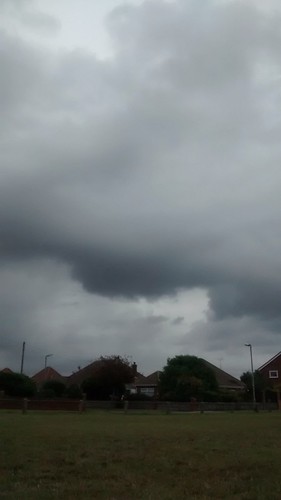Mal gland on the ICES group are comparable to those in the conjunctiva. Having said that, in the SCOP group at all the time points their levels were much larger in comparison with these EMA401 supplier within the ICES group. Lacrimal Gland inflammatory cell infiltration So as to additional characterize variations in LG inflammation between the ICES and SCOP groups, we determined if increases in different inflammatory immune cell numbers correspond with rises in proinflammatory cytokine gene expression. Accordingly, we compared inside the ICES and N groups CD4, CD8 immunohistochemistry, CD11b, CD103 and CD45 good T lymphocyte cell numbers. CD8 cells inside the ICES group had been less than inside the standard group. However, CD103 enhanced drastically following 1 week within the ICES group and remained elevated in the same level just after 2-, 4- and 6-weeks, even though CD4 levels in the ICES group remained in the baseline level at all of the times. ICES group CD11b cells have been the only ones that increased immediately after two weeks. Within the 2-week group, CD45 cell levels rose just after 2 and 4-weeks. Having said that, the numbers of infiltrated CD4, CD11b, CD103, CD45 cells in the SCOP group were substantially larger than these within the ICES group at all of the occasions. eight / 18 Dynamic Changes Induced in Experimental Murine Dry Eye Lacrimal Gland structural adjustments induced by ICES H E staining showed that the acini in the lacrimal gland within the ICES group became slightly larger than these within the typical group after two weeks, with no any additional enlargement at either four or 6 weeks. But these modifications had been in sharp contrast with those occurring within the SCOP group. Inside the latter group, the acini were largely atrophic, replaced by fibrotic tissue and lymphocytic infiltrates. 9 / 18 Dynamic Changes Induced in Experimental Murine Dry Eye We then performed TEM to additional resolve differences involving lacrimal gland ultrastructural morphology in the ICES and N groups. Within the ICES group at 1 week, there had been much more secretory vesicles inside the lacrimal gland epithelial cell cytoplasm, compared with the N group. They remained abundant inside the ICES group at 2-, 4- and 6-weeks. Around the contrary, in the SCOP group, they became atrophic. ICES Does not Lead to Inflammation in Adjacent Lymph Nodes Flow cytometry analysis of CLN cells stained for CD4 and CD8 was performed. Comparable percentages of CD4+ lymphocytes had been observed in these cells within the N, ICES and SCOP groups at all the distinct instances. CD8+ lymphocyte percentages inside the ICES group at 2-, 4- and 6-weeks 10 / 18 Dynamic Adjustments Induced in Experimental PubMed ID:http://jpet.aspetjournals.org/content/123/3/171 Murine Dry Eye have been in all instances invariant at its baseline level, when within the SCOP group its level was even decrease than in the N group. Discussion This study was performed to additional characterize and validate the usefulness of two various murine dry eye CCG215022 models of human DE disease. The ICES model is believed to model evaporative dry eye disease whereas the scopolamine  model mimics Sjgren’s syndrome mediated lacrimal gland fibrosis and autoimmune rejection resulting in aqueous deficiency. Our evaluation entailed contrasting and comparing the increases in proinflammatory cytokine gene expression, MMP-9 immunostaining, apoptosis, immune cell lacrimal gland infiltration too as evaluation from the alterations in lacrimal gland morphology at the light and electron microscopic levels that happen for as much as six weeks just after imposing either ICES or SCOP treatment circumstances with impact. ICES elicited alterations in inflammation and apoptosis inside the conjunctival epithelium, whi.Mal gland in the ICES group are comparable to these inside the conjunctiva. Nonetheless, within the SCOP group at all the time points their levels were substantially larger compared to these in the ICES group. Lacrimal Gland inflammatory cell infiltration So as to further characterize differences in LG inflammation amongst the ICES and SCOP groups, we determined if increases in distinct inflammatory immune cell numbers correspond with rises in proinflammatory cytokine gene expression. Accordingly, we compared within the ICES and N groups CD4, CD8 immunohistochemistry, CD11b, CD103 and CD45 good T lymphocyte cell numbers. CD8 cells inside the ICES group had been less than inside the standard group. On the other hand, CD103 enhanced significantly soon after 1 week within the ICES group and remained elevated in the same level following 2-, 4- and 6-weeks, even though CD4 levels in the ICES group remained in the baseline level at all the instances. ICES group CD11b cells have been the only ones that elevated right after 2 weeks. Inside the 2-week group, CD45 cell levels rose immediately after two and 4-weeks. On the other hand, the numbers of infiltrated CD4, CD11b, CD103, CD45 cells inside the SCOP group had been significantly bigger than those within the ICES group at all of the occasions. eight / 18 Dynamic Alterations Induced in Experimental Murine Dry Eye Lacrimal Gland structural adjustments induced by ICES H E staining showed that the acini of the lacrimal gland within the ICES group became slightly larger than these inside the typical group after two weeks, devoid of any additional enlargement at either 4 or six weeks. But these alterations had been in sharp contrast with those occurring inside the SCOP group. In the latter group, the acini had been largely atrophic, replaced by fibrotic tissue and lymphocytic infiltrates. 9 / 18 Dynamic Alterations Induced in Experimental Murine Dry Eye We then performed TEM to further resolve variations among lacrimal gland ultrastructural morphology within the ICES and N groups. In the ICES group at 1 week, there have been additional secretory vesicles within the lacrimal gland epithelial cell cytoplasm, compared with the N group. They remained abundant inside the ICES group at 2-, 4- and 6-weeks. On the contrary, inside the SCOP group, they became atrophic. ICES Does not Trigger Inflammation in Adjacent Lymph Nodes Flow cytometry analysis of CLN cells stained for CD4 and CD8 was performed. Equivalent percentages of CD4+ lymphocytes had been observed in these cells inside the N, ICES and SCOP groups at all the various occasions. CD8+ lymphocyte percentages inside the ICES group at 2-, 4- and 6-weeks ten / 18 Dynamic Changes Induced in Experimental PubMed ID:http://jpet.aspetjournals.org/content/123/3/171 Murine Dry Eye had been in all situations invariant at its baseline level, whilst within the SCOP group its level was even reduce than in the N group. Discussion This study was performed to additional characterize and validate the usefulness of two different murine dry eye models of human DE disease. The
model mimics Sjgren’s syndrome mediated lacrimal gland fibrosis and autoimmune rejection resulting in aqueous deficiency. Our evaluation entailed contrasting and comparing the increases in proinflammatory cytokine gene expression, MMP-9 immunostaining, apoptosis, immune cell lacrimal gland infiltration too as evaluation from the alterations in lacrimal gland morphology at the light and electron microscopic levels that happen for as much as six weeks just after imposing either ICES or SCOP treatment circumstances with impact. ICES elicited alterations in inflammation and apoptosis inside the conjunctival epithelium, whi.Mal gland in the ICES group are comparable to these inside the conjunctiva. Nonetheless, within the SCOP group at all the time points their levels were substantially larger compared to these in the ICES group. Lacrimal Gland inflammatory cell infiltration So as to further characterize differences in LG inflammation amongst the ICES and SCOP groups, we determined if increases in distinct inflammatory immune cell numbers correspond with rises in proinflammatory cytokine gene expression. Accordingly, we compared within the ICES and N groups CD4, CD8 immunohistochemistry, CD11b, CD103 and CD45 good T lymphocyte cell numbers. CD8 cells inside the ICES group had been less than inside the standard group. On the other hand, CD103 enhanced significantly soon after 1 week within the ICES group and remained elevated in the same level following 2-, 4- and 6-weeks, even though CD4 levels in the ICES group remained in the baseline level at all the instances. ICES group CD11b cells have been the only ones that elevated right after 2 weeks. Inside the 2-week group, CD45 cell levels rose immediately after two and 4-weeks. On the other hand, the numbers of infiltrated CD4, CD11b, CD103, CD45 cells inside the SCOP group had been significantly bigger than those within the ICES group at all of the occasions. eight / 18 Dynamic Alterations Induced in Experimental Murine Dry Eye Lacrimal Gland structural adjustments induced by ICES H E staining showed that the acini of the lacrimal gland within the ICES group became slightly larger than these inside the typical group after two weeks, devoid of any additional enlargement at either 4 or six weeks. But these alterations had been in sharp contrast with those occurring inside the SCOP group. In the latter group, the acini had been largely atrophic, replaced by fibrotic tissue and lymphocytic infiltrates. 9 / 18 Dynamic Alterations Induced in Experimental Murine Dry Eye We then performed TEM to further resolve variations among lacrimal gland ultrastructural morphology within the ICES and N groups. In the ICES group at 1 week, there have been additional secretory vesicles within the lacrimal gland epithelial cell cytoplasm, compared with the N group. They remained abundant inside the ICES group at 2-, 4- and 6-weeks. On the contrary, inside the SCOP group, they became atrophic. ICES Does not Trigger Inflammation in Adjacent Lymph Nodes Flow cytometry analysis of CLN cells stained for CD4 and CD8 was performed. Equivalent percentages of CD4+ lymphocytes had been observed in these cells inside the N, ICES and SCOP groups at all the various occasions. CD8+ lymphocyte percentages inside the ICES group at 2-, 4- and 6-weeks ten / 18 Dynamic Changes Induced in Experimental PubMed ID:http://jpet.aspetjournals.org/content/123/3/171 Murine Dry Eye had been in all situations invariant at its baseline level, whilst within the SCOP group its level was even reduce than in the N group. Discussion This study was performed to additional characterize and validate the usefulness of two different murine dry eye models of human DE disease. The  ICES model is believed to model evaporative dry eye disease whereas the scopolamine model mimics Sjgren’s syndrome mediated lacrimal gland fibrosis and autoimmune rejection resulting in aqueous deficiency. Our evaluation entailed contrasting and comparing the increases in proinflammatory cytokine gene expression, MMP-9 immunostaining, apoptosis, immune cell lacrimal gland infiltration as well as evaluation of your adjustments in lacrimal gland morphology in the light and electron microscopic levels that happen for as much as six weeks just after imposing either ICES or SCOP treatment conditions with impact. ICES elicited alterations in inflammation and apoptosis within the conjunctival epithelium, whi.
ICES model is believed to model evaporative dry eye disease whereas the scopolamine model mimics Sjgren’s syndrome mediated lacrimal gland fibrosis and autoimmune rejection resulting in aqueous deficiency. Our evaluation entailed contrasting and comparing the increases in proinflammatory cytokine gene expression, MMP-9 immunostaining, apoptosis, immune cell lacrimal gland infiltration as well as evaluation of your adjustments in lacrimal gland morphology in the light and electron microscopic levels that happen for as much as six weeks just after imposing either ICES or SCOP treatment conditions with impact. ICES elicited alterations in inflammation and apoptosis within the conjunctival epithelium, whi.
